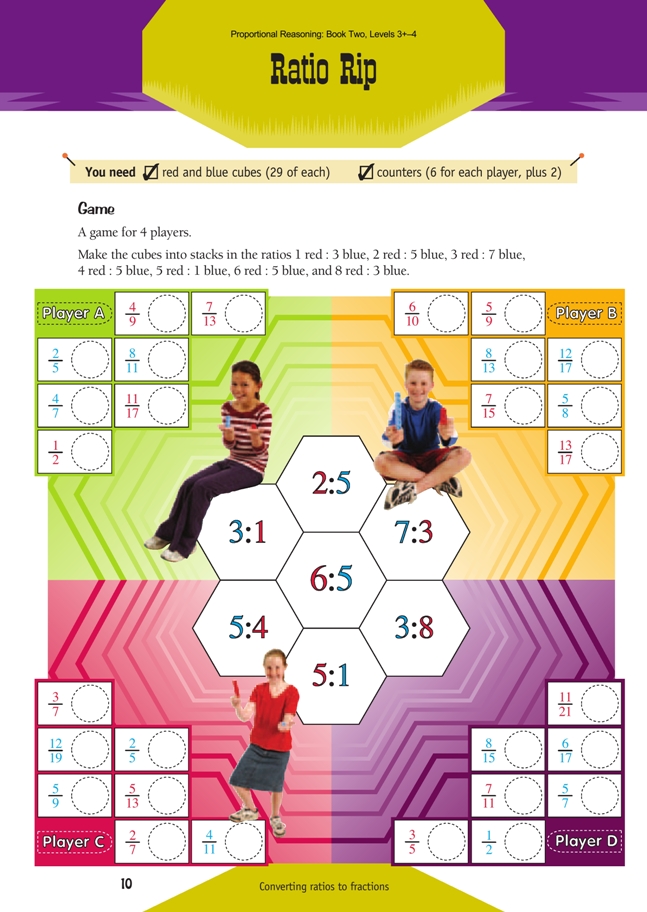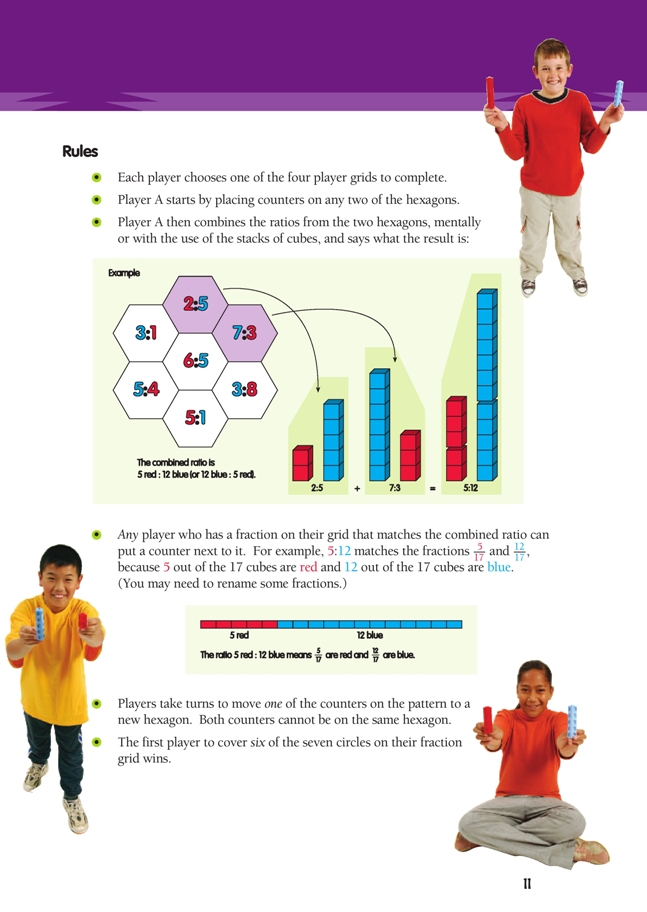This is a level 5 number activity from the Figure It Out series. It relates to Stage 8 of the Number Framework.
A PDF of the student activity is included.
Click on the image to enlarge it. Click again to close. Download PDF (1180 KB)
convert ratios to fractions
Number Framework Links
Use this activity to help students consolidate and apply their knowledge of equivalent fractions (stage 8).
FIO, Level 3-4+, Proportional Reasoning, Book Two, Ratio Rip, pages 10-11
Counters (6 for each player, plus 2)
In this game, students practise recognising the relationship between the ratio of the parts in a whole and the fraction of the parts to the whole. They must know that a ratio of 2:5 (for example) within a set means that the two kinds of cube are present in the whole in the proportions 5/7 and 2/7. This principle is clearly illustrated by the diagram on page 11 in the students’ book.
Get four players to demonstrate the game while the rest of the class observes. Designate a place for the stacks of cubes and label each stack with a card showing the ratio (for example, 1 red : 3 blue or 2 red : 5 blue). These cards will help players keep the stacks organised.
Ensure that your students recognise that they must join the same-coloured parts of two ratios, regardless of which coloured part is named first in each: 2 red to 5 blue is the same as 5 blue to 2 red.
After students have used the blocks to help them combine two ratios, they should separate them into their original stacks, ready to be used again. They are likely to find before long that they can image the operations and do not need to handle the blocks at all.
Emphasise the fourth rule. Players who are playing strategically will choose ratios that can’t be matched by their opponents.
Once players are familiar with the rules, they can use this game for independent practice in small groups.
Later, students may like to experiment with changes to the rules and come up with their own variations on the game. For example, a rule change could say “If a player forms a ratio that is already covered on an opponent’s grid, they can remove the covering counter.” This variation may need a time limit, in which case, the winner would be the person with most fractions covered when the agreed time is up.
Answers to Activity
A game that involves matching ratios and fractions

